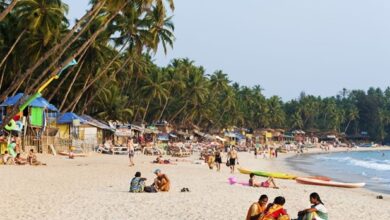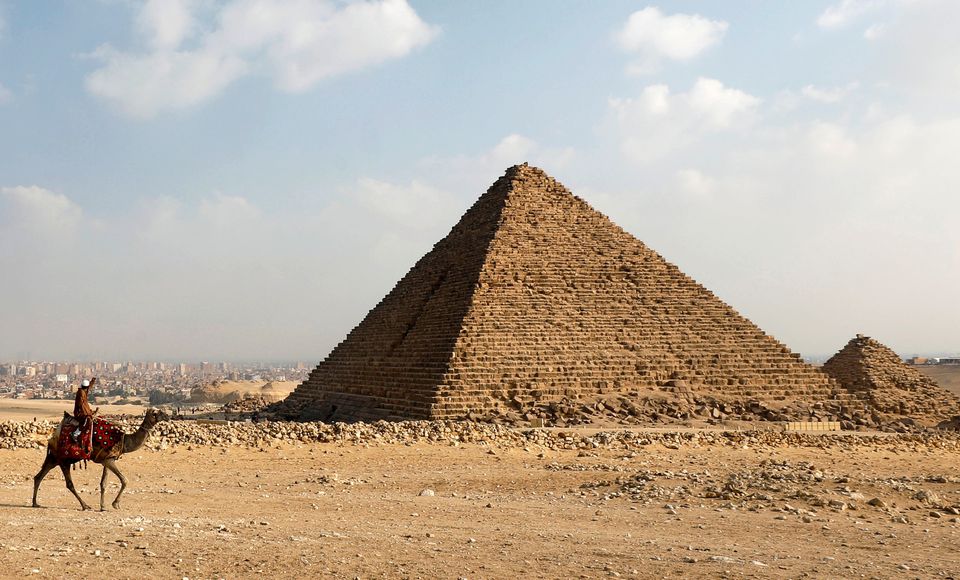For more laid-back travelers, Sharm el-Sheikh has been traditionally associated with charter tourism, over-development, loss of uniqueness, and overcrowdedness — the product of intensive, sometimes unchecked investment in the area since the 1980s. For some, like myself, the sounds and sights of intensive industrial tourism are nothing but disconcerting.
But if we get down to the basics, the strengths of Sharm el-Sheikh, the exhilarating underwater life, the mountainous panorama and the intriguing history, are a reason for laid-back travelers to give the city a chance.
I am an avid Sinai-goer and was recently in the mood for retrieving Sharm el-Sheikh’s tie to its mother peninsula. I knew that of its main areas, Sharks Bay remains the least developed. Or at least it houses some of the few remaining Bedouin encampments in the town. So Umbi was my choice.
The camp encapsulated exactly what I needed from Sharm el-Sheikh. For one, it was a gateway into an internationally renowned diving spot and a hub for water sports. Meanwhile, it remains connected to the intricate history of the city and the peninsula by and large, evading the incessant sense of forgetfulness bestowed upon the lavishly illuminated side of town.
Albeit less lit, Umbi is a house of history. And it highlights a depth to Sharm el-Sheikh that is otherwise masked by the city lights.
Umbi is named after its founder, Sheikh Umbarak, who belongs to the Aleiqat tribe. Sitting under the shade of a palm tree in the camp with his trendy sunglasses and shorts, the old man recounted to Egypt Independent how his story went back to when he was a fisherman, at the time of the Israeli occupation of the Sinai Peninsula.
Back then, parts of Sharm el-Sheikh were actually developed into an Israeli settlement called Ofira. While he was mainly working in Dahab, Sheikh Umbarak ventured into business with a diving boat on the edge of Sharm el-Sheikh in the early 1980s.
His small business quickly became known among communities frequenting the area, mostly Israeli tourists. He inaugurated the ever-thriving diving business of Sharm el-Sheikh, which granted the city a place on the global map.
But not only does Umbi bear all the trappings of an economy rendered global today, it also bears the roots of the historic marginalization of Sinai’s tribesmen in the post-occupation development boom. While the main city attractions such as Naema Bay are scarily devoid of any native presence, Umbi resolves the myth.
It is a Bedouin camp owned by a Bedouin man in an economy that has literally pushed native Bedouins to the margins, limiting their participation in the tourism boom to consuming waste for their livestock. Sheikh Umbarak told of how he spent years in dispute with the government over both his diving activity and the land he claimed, on the eve of the Egyptian developmental conquest of Sharm el-Sheikh.
“At least, under the Israelis, we knew it was occupation. In the minds of the Egyptian government, the Bedouin is the man of the camels. I confused them,” he said, chillingly. He has no reason to worry. Ahead of him, an extended sea borders one of the few remaining sand beaches in the city.
The sounds are natural — waves, chitchat, boats. Umbi somewhat reclaims nature and the normality with which humans consume it. The camp itself is heavily influenced by Bedouin aesthetics: simple huts with wooded roofs, sparsely furnished with cushions and handmade rugs.
For critical anthropologists, the scene may be just another example of tourism development translated into overt cultural production. But for a simple traveler like myself, with no particular thirst for Bedouin fetishes, the interior just felt minimal and serene.
The accommodation follows the same aesthetic, ranging from small beach cabins to higher end air-conditioned rooms, nothing exceeding LE300, meager for Sharm el-Sheikh. A drag of spiral stairs dug amid the mountain connects the different floors and crystallizes how Umbi is literally carved into nature.
Diving, the main activity around which Umbi was conceived, is conducted through a center that offers diving licenses from the Professional Association of Diving Instructors for beginners, as well as those who want to go further down the diving ladder. Umbi’s intimate setting provides for a nice learning atmosphere, especially if you’re just stepping into the attractive world of diving.
The center also offers short and long diving safaris to the area’s main attractions, most notably the Ras Mohamed nature reserve, with Umbi’s fleet of five boats, dubbed “Freedom.” Travelers passing through can make use of quick, guided dives, but they have to be at least 24 hours away from their scheduled flights.
The richness of Sharm el-Sheikh’s underwater life is manifested on the shores of Umbi. If you’re not into full-gear diving, snorkelling is a better option. But then there’s also all the fun associated with parasailing — in which you see the mostly feared jellyfish under a different light, as tons of pink dots in the sea from above — as well as wakeboarding and other activities.
In its publicity material, Umbi reproduces the language of Sharm el-Sheikh’s industrial tourism, reminding its potential guests that it’s “only” a 10-minute drive away from the bustling Naema Bay. By doing so, it also reminds them that it’s a periphery of some sort, not realizing that its forte lies in its marginality.
I am no tourism public relations consultant, but I ventured to tell Sheikh Umbarak that it’s an unnecessary piece of information.
This piece was originally published in Egypt Independent’s weekly print edition.




